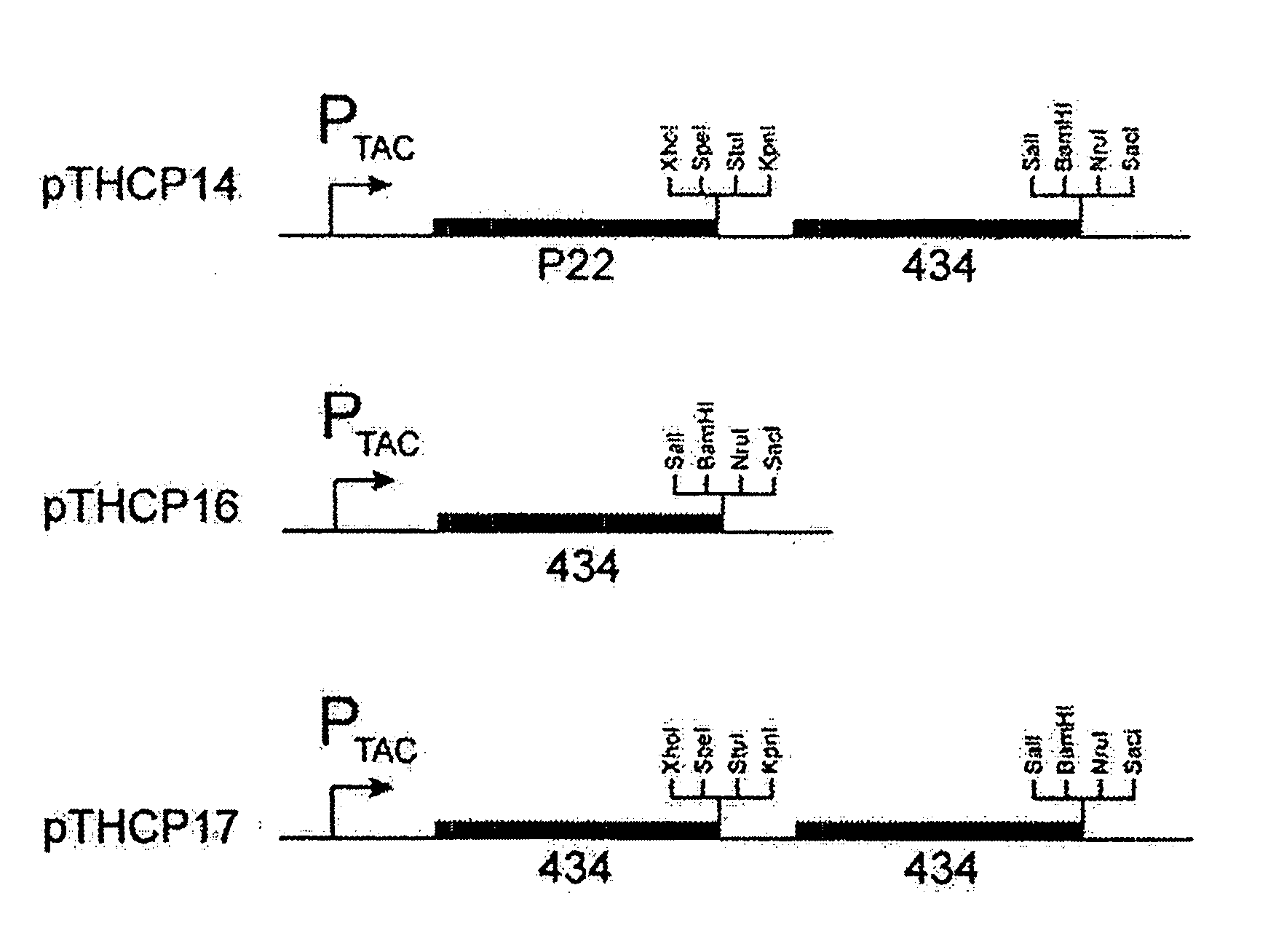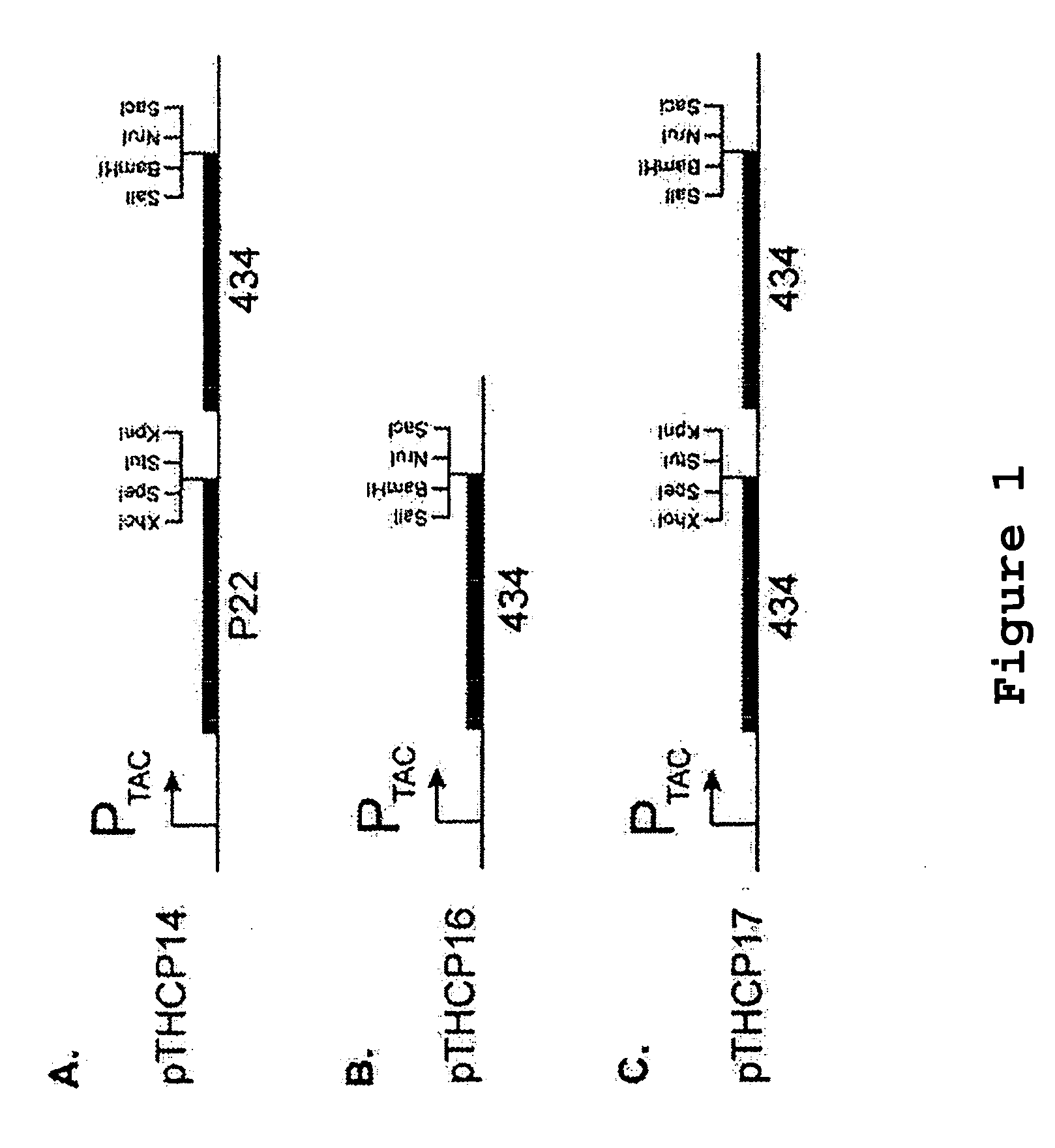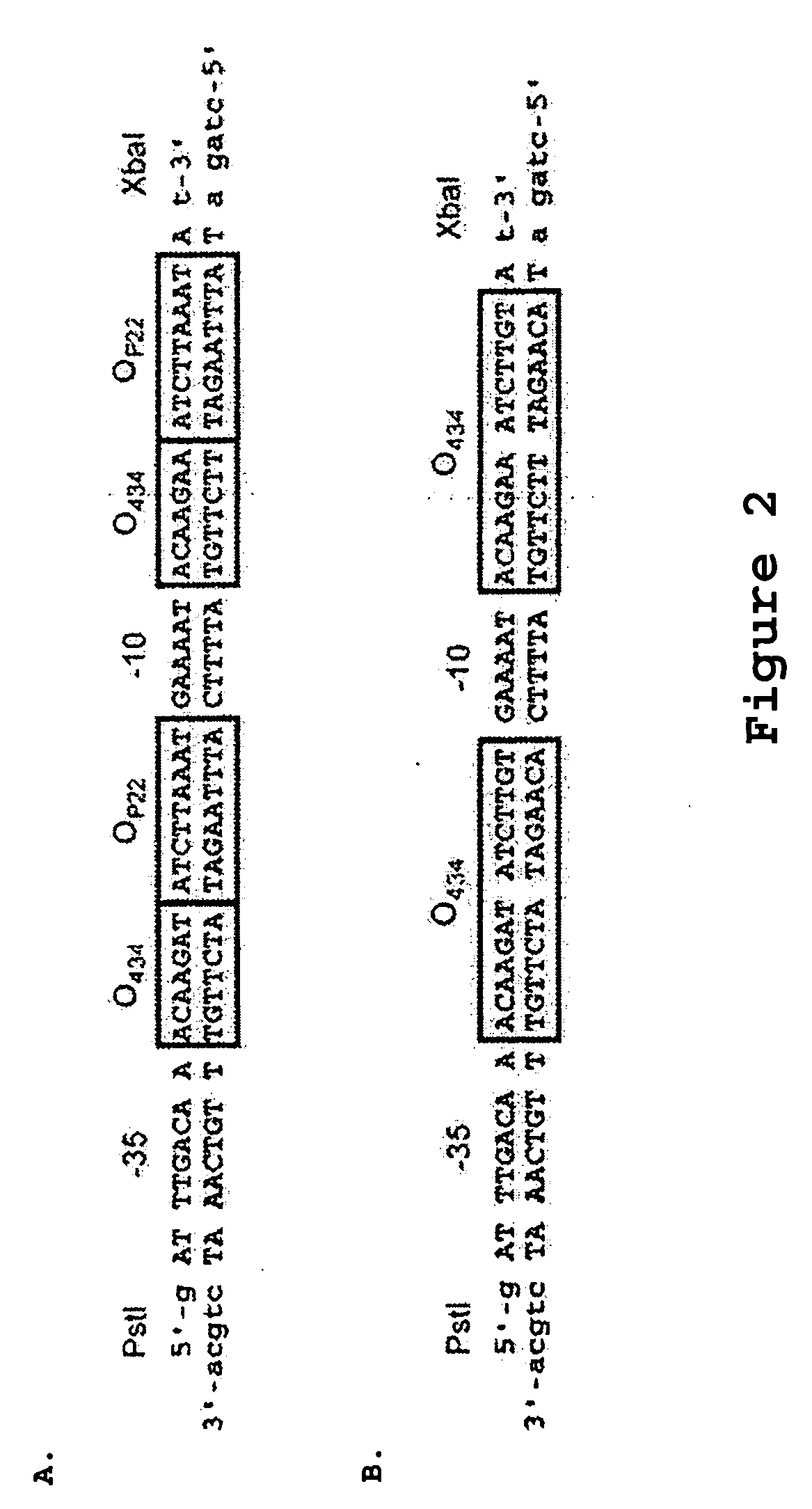Genetic selection of small molecule modulators of protein-protein interactions
a small molecule and interaction technology, applied in the field of protein biology, to achieve the effects of improving the sensitivity, selectivity, and adaptability of the method, and increasing the selectivity of the living cell to interaction modulation
- Summary
- Abstract
- Description
- Claims
- Application Information
AI Technical Summary
Benefits of technology
Problems solved by technology
Method used
Image
Examples
example 1
Proteins, Peptides and Interaction Analyses
[0052] A bacterial reverse two-hybrid system and a three-hybrid system are described that are capable of correlating host cell survival and / or reporter gene expression to the interaction of proteins in vivo. The system relies on conditional expression of two chromosomal reporters, enabling sensitive, chemically tunable genetic selections.
[0053] By subjecting the ribonucleotide reductase complex to a SICLOPPS library, cyclic-peptide dissociative inhibitors were identified that yielded several potent effectors, some with an unexpected binding mode, highlighting the intrinsic strength of genetic selection. Given the large library population that a bacterial selection system can potentially process, this method could become a powerful tool for identifying uniquely active modulators of protein-protein interactions.
[0054] Cyclic Peptide Synthesis
[0055] 3-Mercaptopropionic acid (69 mg, 0.65 mmol) was reacted with 2-Aldrithiol™ (Aldrich, 179 mg...
example 2
DNAs, Bacterial Strains and Selections
[0067] Materials.
[0068] All reagents were purchased from VWR or Sigma Chemical. Restriction enzymes and polymerases were purchased from New England Biolabs. Oligonucleotides were synthesized on a 8909 Perceptive Biosystems Expedite DNA synthesizer. Linear peptides were synthesized at Hershey Macromolecular Core Facility of Pennsylvania State University. Plasmid, PCR purification, and gel extraction kits were purchased from Qiagen.
[0069] Recombinant DNA Techniques
[0070]E. coli cultures were maintained in Luria-Bertani (LB) broth. DNA manipulations were performed with E. coli DH5α-E (Invitrogen) or DH5αpir cells Platt, R., et al. (2000) Plasmid 43:12-23]. Plasmids were transformed into E. coli by heat-shock or electroporation [Inoue, H., et al. (1990) Gene 96:23-8]. All DNA sequencing was performed at the Nucleic Acids Facility of Pennsylvania State University.
[0071] Plasmid Constructions:
[0072] A. Triple Reporter Cassette
[0073] The HIS3 ge...
example 3
Bacterial RTHS
[0116] Overall Design Strategy
[0117] A bacterial version of the RTHS that functions in parallel with SICLOPPS was designed. This approach greatly enhanced the throughput capacity and drew on the successful implementation of SICLOPPS in Escherichia coli [Scott et al. (2001) Chem. Biol. 8:801-815; Scott et al. (1999) Pro. Nat. Acad. Sci. 96:13638-13643]. As depicted in FIG. 6, the design was based on the bacteriophage repressor and features a positive genetic selection, which is less likely to yield false positives resulting from RTHS-independent effects on growth rates.
[0118] The RTHS design adapted elements from several bacterial systems to create a robust, flexible, and tunable genetic selection for molecules that modulate protein-protein interactions. The key features of this system are as follows: i) chimeric repressors to monitor true heterodimeric interactions [Di Lallo et al. (2001) Microbiology 147:1651-1656]; ii) two conditionally selective reporters, HIS3 [...
PUM
| Property | Measurement | Unit |
|---|---|---|
| temperature | aaaaa | aaaaa |
| temperature | aaaaa | aaaaa |
| pH | aaaaa | aaaaa |
Abstract
Description
Claims
Application Information
 Login to View More
Login to View More - R&D
- Intellectual Property
- Life Sciences
- Materials
- Tech Scout
- Unparalleled Data Quality
- Higher Quality Content
- 60% Fewer Hallucinations
Browse by: Latest US Patents, China's latest patents, Technical Efficacy Thesaurus, Application Domain, Technology Topic, Popular Technical Reports.
© 2025 PatSnap. All rights reserved.Legal|Privacy policy|Modern Slavery Act Transparency Statement|Sitemap|About US| Contact US: help@patsnap.com



